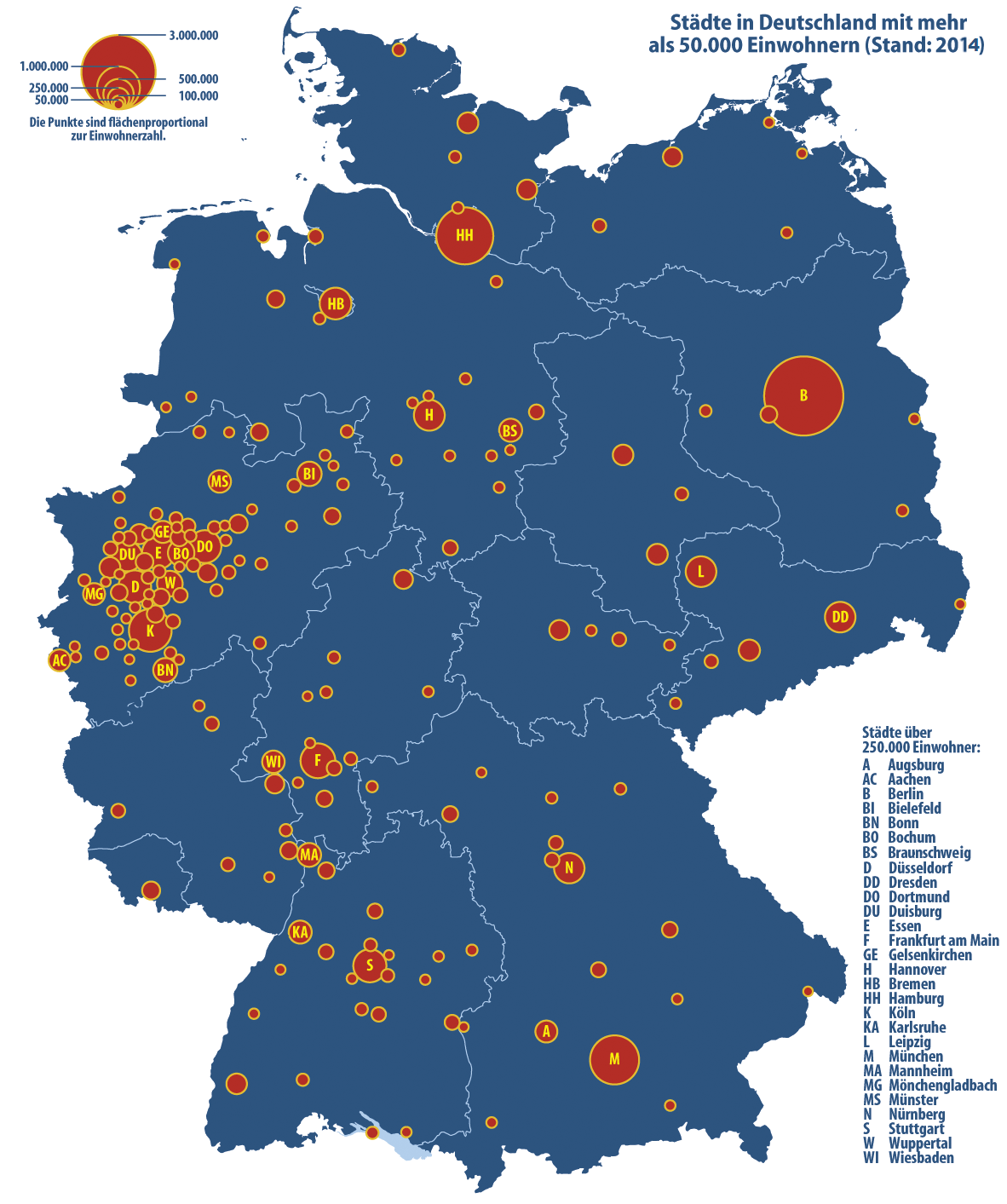City Density Map of North Rhine-Westphalia


David Chen
Data Visualization Specialist
David Chen is an expert in transforming complex geographic datasets into compelling visual narratives. He combines his background in computer science ...
Geographic Analysis
What This Map Shows
The map in question illustrates the striking concentrations of urban areas within North Rhine-Westphalia (NRW), highlighting its status as one of the most densely populated regions in Germany. It showcases the distribution of cities, towns, and metropolitan areas across this federal state, revealing a stark contrast when compared to other regions in Germany. The visualization prompts an intriguing exploration of the factors contributing to this urban density.
Deep Dive into Urban Development in North Rhine-Westphalia
At the heart of NRW's urban density is its rich industrial history, which has shaped the demographic landscape significantly. Historically, the region has been an industrial powerhouse, with its roots in coal mining and steel production. Cities like Dortmund, Essen, and Duisburg emerged as vital industrial hubs during the late 19th and early 20th centuries. Interestingly, this industrial base attracted a large workforce, leading to rapid urbanization as people flocked to these areas in search of employment.
What's fascinating is that this trend did not merely stop with industrialization. Post-World War II, NRW became a focal point for reconstruction and modernization. The economic boom of the 1960s and 1970s saw further urban expansion, with new housing developments and infrastructure projects sprouting up to accommodate the growing population. As of recent statistics, NRW houses around 17.9 million residents, making it the most populous federal state in Germany, with a population density of approximately 528 people per square kilometer.
Moreover, the region's geographical location plays a significant role in its urban concentration. Nestled in the heart of Europe, NRW serves as a vital transportation and logistics hub. The extensive network of highways, railways, and waterways enhances connectivity, facilitating trade and movement. This accessibility not only supports the existing cities but also fosters the growth of smaller towns and suburbs, creating a sprawling urban landscape.
Additionally, the presence of major cities such as Cologne, Düsseldorf, and Bonn contributes to the area's urban density. Each of these cities has its unique character and economic strengths, from Cologne's vibrant media scene to Düsseldorf's status as a financial center. The urban centers are interconnected through a web of suburban towns that provide residential options for those working in the cities, further intensifying the population concentration.
Regional Analysis
When examining the map closely, we can identify several key regions within NRW that exhibit varying degrees of urban density. The Rhine-Ruhr metropolitan area stands out as the most densely populated, encompassing cities like Düsseldorf, Dortmund, and Essen. This metropolitan cluster not only showcases the highest urban concentration but also serves as a significant economic engine for the entire country.
In contrast, areas like the Sauerland and parts of the Münsterland present a much lower urban density. These regions are characterized by their rural landscapes and smaller towns, where agriculture remains a vital part of the local economy. The differences in urbanization can be attributed to historical development patterns, with industrialization playing a lesser role in these regions compared to the urbanized centers of the Rhine-Ruhr.
Moreover, the cities within NRW exhibit distinct demographic profiles. For instance, Cologne is known for its youthful population and cultural vibrancy, whereas cities like Duisburg have faced demographic challenges, including population decline and economic restructuring. Understanding these regional disparities is crucial for urban planners and policymakers as they navigate the complexities of urban development and population management.
Significance and Impact
The dense concentration of cities in North Rhine-Westphalia is not just a matter of numbers; it has profound implications for urban planning, infrastructure development, and regional policy. As cities continue to grow, issues such as housing shortages, environmental sustainability, and transportation congestion come to the forefront. The urban landscape must evolve to accommodate the needs of its residents while prioritizing sustainable practices.
Interestingly, current trends indicate a shift towards more sustainable urban living, with an emphasis on green spaces, public transportation, and smart city initiatives. As NRW tackles these challenges, the lessons learned can serve as a model for other densely populated regions both in Germany and globally. The future of urban living in North Rhine-Westphalia will likely hinge on balancing growth with sustainability, ensuring that the cities remain vibrant and livable for generations to come.
Visualization Details
- Published
- October 12, 2025
- Views
- 34
Comments
Loading comments...